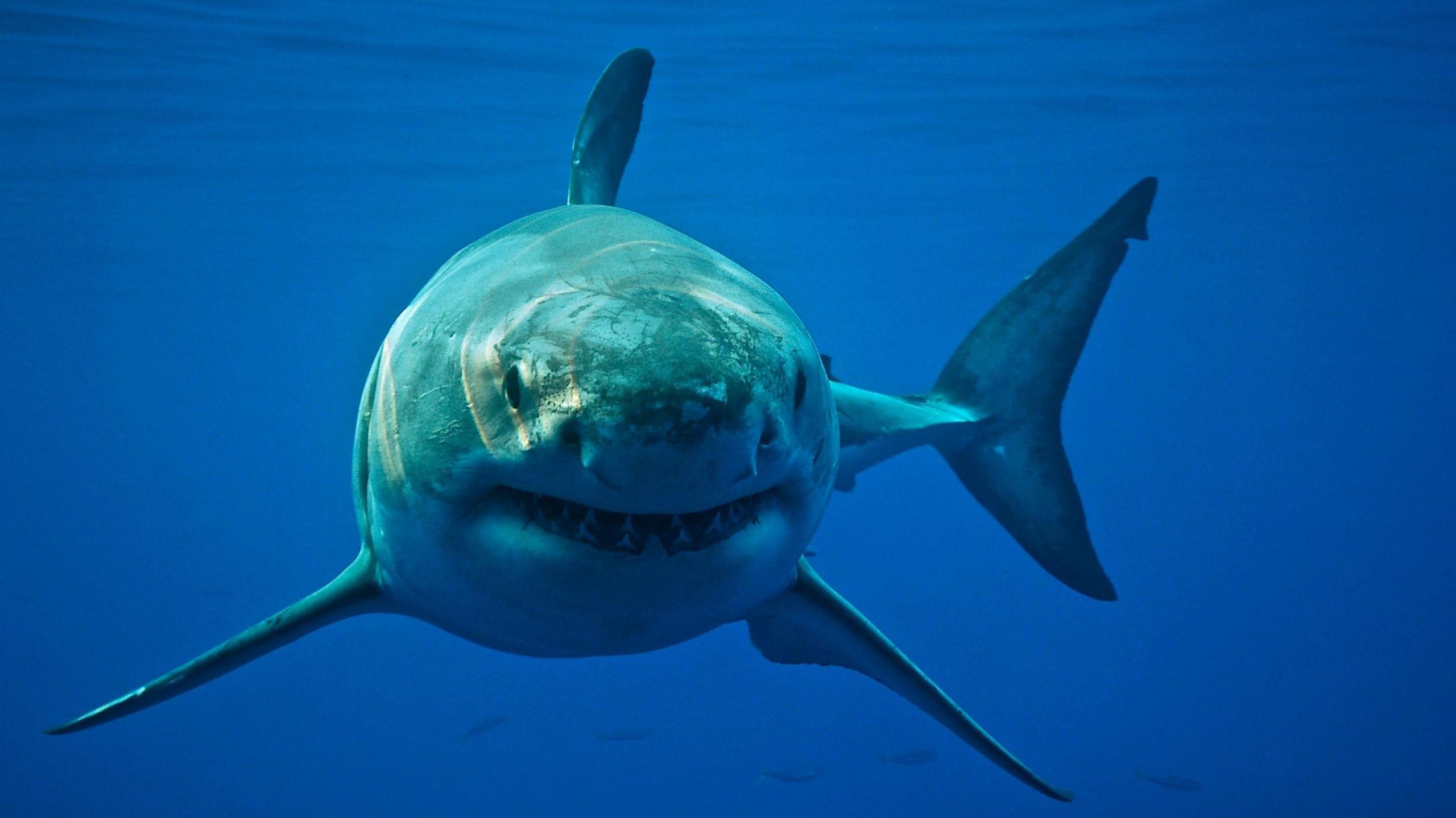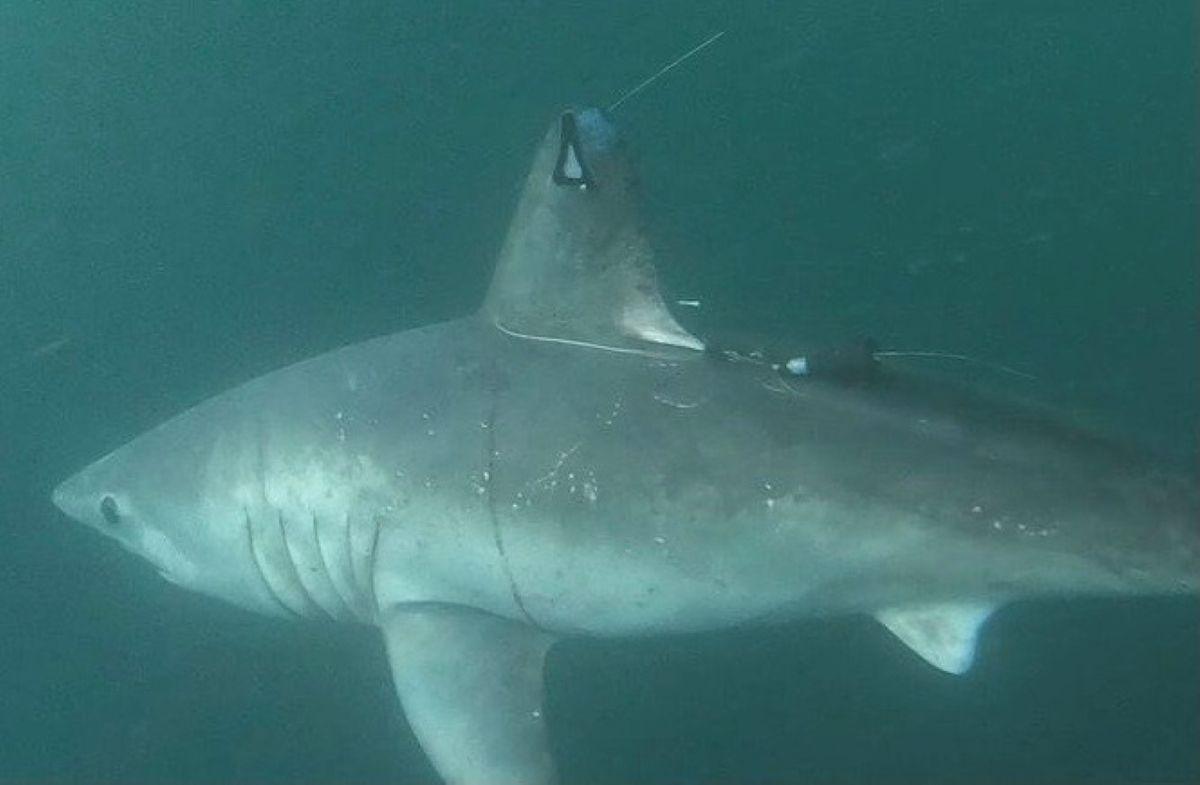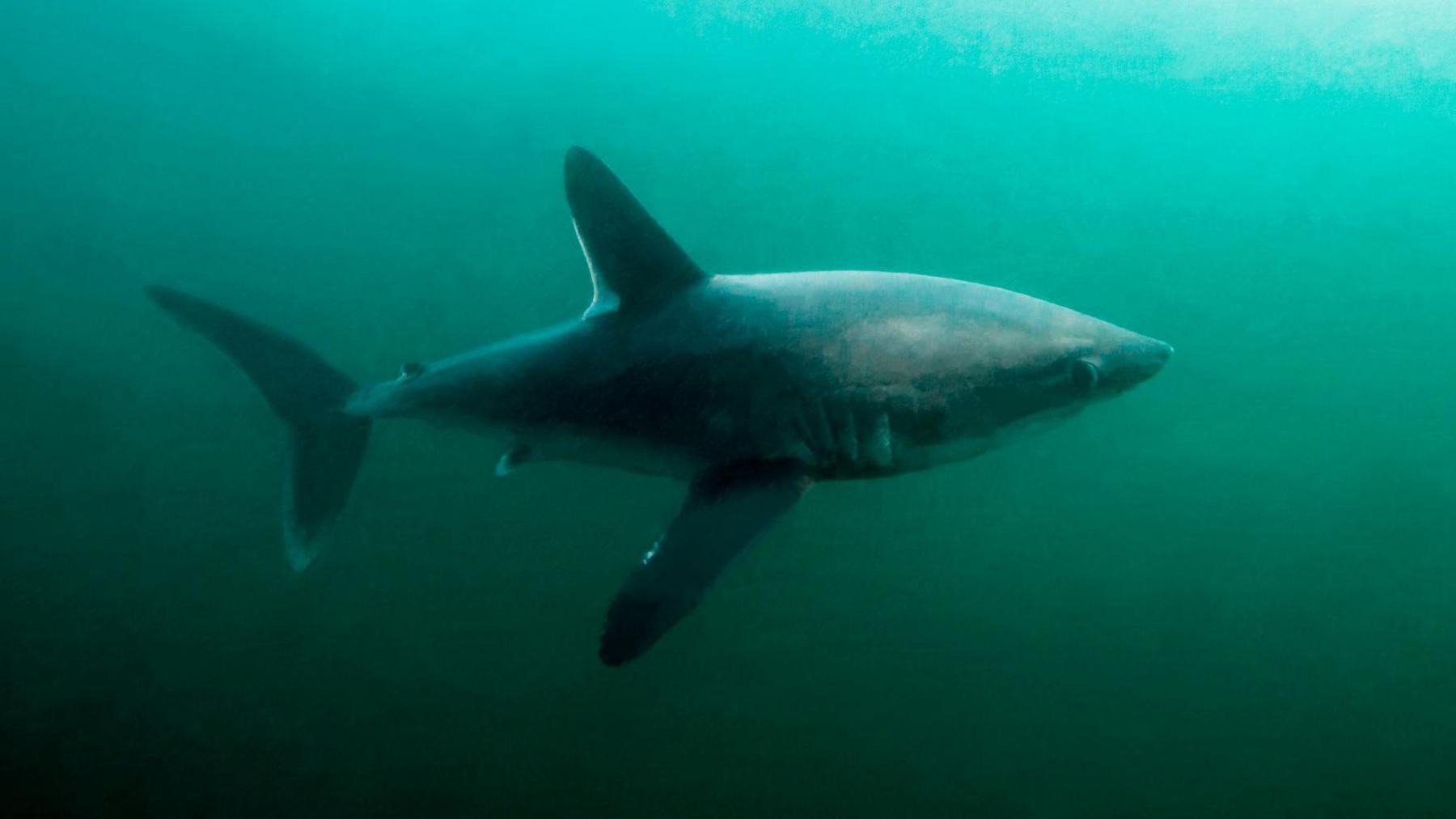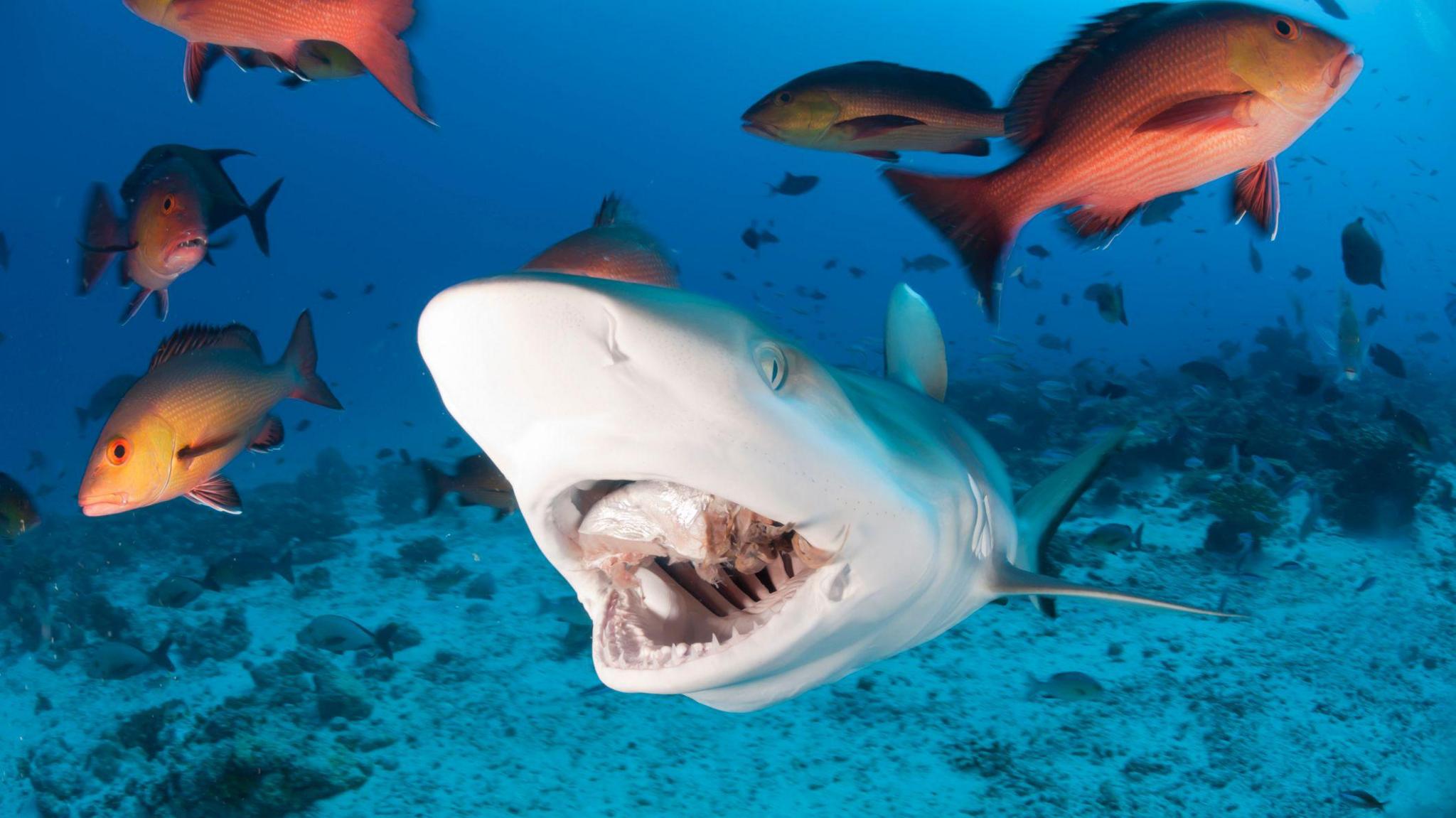Are large sharks hunting each other?

Large sharks hunting one another may be a more common occurrence than first thought
- Published
Sharks are deadly sea predators.
They eat lots of other species including fish, seals and dolphins, but also, other sharks.
Scientists say they've found evidence of a female porbeagle, which is a large type of shark found in the waters around Cornwall and the UK coast, being eaten by what could be an even bigger shark.
Researchers now believe sharks hunting each other could be more common than previously thought.
More shark stories
How sharks are helping to save the oceans
- Published23 March 2021
Why young great white sharks may prefer shallow waters
- Published22 April 2024
What did the mysterious Megalodon ACTUALLY look like?
- Published9 February 2022
A two metre-long porbeagle was pregnant when she was first tagged four years ago by Dr Brooke Anderson and her colleagues in Massachusetts in the US.
A device known as PSAT, which stands for pop-off satellite archival tag, was attached to her fin so the team could keep track of the shark's location.
When submerged in the water, the tags measure the depth and temperature and store the data until they fall off.
The hope was that the porbeagle would help scientists identify where shark mothers raise their newborns.

The pregnant porbeagle shark was fitted with a PSAT tag
However, just 22 weeks after she was tagged, the shark's PSAT started to transmit from near Bermuda in the North Atlantic Ocean, which suggested it had popped off and was now floating at the surface.
When they looked at the data, they found the depth and temperature had suddenly changed after being constant for some time.
This led them to believe a great white shark, which is the largest known predatory fish on the planet, may have killed the pregnant porbeagle.
Dr Anderson described the loss of the pregnant porbeagle in this way as "an unexpected discovery".

Porbeagle sharks are classed as vulnerable on the IUCN red list
The team of experts said the findings suggest predators eating each other could be more widespread than thought.
Porbeagle sharks are currently listed as "vulnerable" in the IUCN (International Union for Conservation of Nature) red list.
This means they're at a high risk of extinction as their numbers have fallen rapidly over the years.
Their population in the North Atlantic Ocean is classed as "critically endangered" because of overfishing, which had led to a drastic drop in their numbers.
"There could be major impacts for the porbeagle shark population that is already suffering due to historic overfishing," said Dr Anderson about the recent findings.

Sharks are predators which are typically viewed as being at the top of the food chain
Large sharks are often viewed as being at the top of the food chain, but the latest research sheds some new light on this.
"We need to continue studying predator interactions, to estimate how often large sharks hunt each other," Dr Anderson explained.
- Published2 September 2024

- Published3 September 2024

- Published2 September 2024
